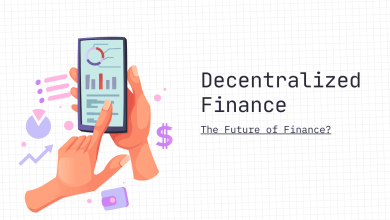TRON (TRX) is a blockchain-based platform that aims to decentralize the entertainment and content-sharing industry. Founded by Justin Sun in 2017, TRON has evolved from its initial focus on content creators to encompass a broader range of decentralized applications (dApps), including DeFi (Decentralized Finance) and NFTs (Non-Fungible Tokens). This article will explore what TRON is, its key features, its native cryptocurrency (TRX), its ecosystem, and its potential future.
What is TRON? The Vision

TRON’s core vision is to create a “decentralized internet,” often referred to as Web3, where users have greater control over their data and content. It aims to disrupt the traditional model of content distribution, where large platforms (like YouTube, Facebook, and Netflix) act as intermediaries, taking a significant cut of the revenue and controlling the distribution channels.
TRON seeks to empower content creators by allowing them to connect directly with their audience, bypass intermediaries, and receive fair compensation for their work. It also aims to provide users with more choices and control over the content they consume.
Key Features of the TRON Platform
- Decentralized Storage: TRON utilizes a distributed storage system, allowing content to be stored across a network of computers rather than on centralized servers. This enhances data security and resilience.
- Smart Contracts: TRON supports smart contracts, self-executing agreements that automate processes and enable the creation of dApps. The TRON Virtual Machine (TVM) is compatible with Ethereum’s Solidity language, making it easier for developers to port existing dApps to TRON.
- Delegated Proof-of-Stake (DPoS) Consensus: TRON uses a DPoS consensus mechanism, where TRX holders vote for “Super Representatives” (SRs) who are responsible for validating transactions and creating blocks. This allows for high transaction throughput and relatively low transaction fees.
- High Throughput: TRON is designed to handle a large volume of transactions, aiming for thousands of transactions per second (TPS).
- Scalability: The platform is designed to be scalable, capable of supporting a growing number of users and dApps.
- User-Friendly Tools: TRON provides developers with tools and resources to facilitate dApp creation.
TRX: The Native Cryptocurrency of TRON

TRX (also known as Tronix) is the native cryptocurrency of the TRON blockchain. It serves several key functions:
- Transaction Fees: TRX is used to pay for transaction fees on the TRON network.
- Staking and Governance: TRX holders can stake their coins to participate in the DPoS consensus mechanism and vote for Super Representatives.
- Access to dApps: TRX can be used to access and interact with dApps built on the TRON platform.
- Medium of Exchange: TRX can be used as a medium of exchange within the TRON ecosystem and traded on cryptocurrency exchanges.
The TRON Ecosystem
The TRON ecosystem has grown significantly since its inception and includes a variety of components:
- TRON Foundation: A non-profit organization that supports the development and growth of the TRON ecosystem.
- Super Representatives (SRs): The 27 elected nodes responsible for validating transactions and producing blocks.
- dApps: A wide range of decentralized applications built on TRON, including games, social media platforms, DeFi protocols, and NFT marketplaces.
- Wallets: Various wallets support TRX and TRON-based tokens, including hardware wallets, software wallets, and mobile wallets.
- Exchanges: TRX is listed on numerous cryptocurrency exchanges, making it easily accessible for trading.
- BitTorrent: TRON acquired BitTorrent, a popular peer-to-peer file-sharing protocol, in 2018. BitTorrent Token (BTT) is a TRC-10 token used to incentivize file sharing and improve download speeds.
- USDD: A decentralized, over-collateralized stablecoin on the TRON network.
TRON’s Partnerships and Acquisitions
TRON has actively pursued partnerships and acquisitions to expand its reach and influence. Some notable examples include:
- BitTorrent: As mentioned above, the acquisition of BitTorrent brought a large user base and a well-established technology into the TRON ecosystem.
- Samsung: TRON has partnered with Samsung, integrating its blockchain into the Samsung Blockchain Keystore.
- Opera: The Opera browser has integrated support for TRON and TRX.
- Poloniex: TRON acquired Poloniex, a cryptocurrency exchange.
Criticisms and Controversies
TRON has faced its share of criticism and controversy:
- Centralization Concerns: The DPoS consensus mechanism, with its limited number of Super Representatives, has raised concerns about centralization.
- Marketing Hype: TRON and its founder, Justin Sun, have been criticized for excessive marketing and hype.
- Plagiarism Allegations: There have been allegations of plagiarism in TRON’s whitepaper and codebase.
- USDD depegging: Similar to the Terra Luna collapse, USDD has previously lost its peg to the US Dollar.
The Future of TRON

TRON continues to develop its platform and expand its ecosystem. Its focus remains on building a decentralized internet and empowering content creators. Key areas of development include:
- Improving Scalability: TRON is working on further enhancing its scalability to handle even greater transaction volumes.
- Expanding DeFi Ecosystem: TRON aims to attract more DeFi projects and users to its platform.
- Growing the NFT Market: TRON is actively promoting the development of NFT projects on its blockchain.
- Strengthening Governance: Efforts are being made to improve the decentralization and transparency of the TRON governance model.
Conclusion: TRON – A Contender in the Decentralized Web
TRON is a ambitious -project with a grand vision for a decentralized internet. While it has faced challenges and criticism, it has also achieved significant milestones and built a large and active ecosystem. Whether TRON can ultimately achieve its goals remains to be seen, but it remains a significant player in the blockchain space, particularly in the areas of content creation, entertainment, and DeFi. As with any cryptocurrency investment, thorough research and careful consideration of the risks are essential.






